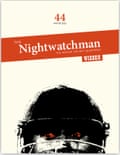Immortal butterfingers: the eternal infamy of a dropped catch
Anyone who has played even a few matches of cricket will likely have been there; whether it’s a firmly struck ball that does not give you enough time to react or, worse still, a looped-up dolly where there is too long to think. Either way, the ball evades the fielder’s grasp and then waits nearby like an obedient dog or scuttles off into the distance.
Once any physical pain begins to subside, there are other matters to deal with – the cross looks from the bowler, the smirks from teammates, the worry that the ball will mockingly come your way again and prove similarly elusive. At my own club, a particularly bad drop from nearly 20 years ago is still brought up to this day, despite the culprit (even the language is accusatory) having not played for the club for 15 years.
At this point, it is worth sparing a thought for those playing at a higher level, where such mistakes are recorded for posterity and analysed again and again. For example, Shane Warne, in addition to his mastery of leg-spin, was a great slip fielder but his drop at the Oval of his great friend Kevin Pietersen in the 2005 Ashes is almost as well known as his bowling exploits.
Another famous drop was by wicketkeeper Chris Scott in 1994. It is not so much the chance which sticks in people’s minds but the fact the batter was Brian Lara, who went on to make 501 not out having been on just 18 when the chance was missed.
Cricket has long had an obsession with firsts – Lara’s score was the first first-class score of over 500; his West Indies teammate Courtney Walsh was the first to reach 500 Test wickets. Some firsts are less flattering. John Tufton, for instance, was the first player recorded to have been given out LBW, in 1795.
Only one person, however, can have the unfortunate distinction of being the first on record to drop a catch. Players have felt the ball hit their hands and burst free from the very first games of cricket ever played. Such drops were no doubt talked about on the field and in the pubs after, laughed at and dissected, perhaps even written about in correspondence.

All were eventually lost in the mists of time. This inadvertent process of forgetting went on, as far as I am aware, until 1744. For that is the year in which the earliest recorded dropped catch took place. And even at a distance of almost 300 years, Thomas Waymark’s embarrassment can all too easily be imagined. Well over a century after his drop, he was memorably, albeit cruelly, referred to as the “immortal butterfingers” on the strength of this one incident.
Waymark is one of the earliest well-known cricketers, and was retained by the Duke of Richmond, primarily for his skill at cricket. When not playing, he was employed as a groom. It is likely that he was born at Mitcham in Surrey, whose cricket club claims to be one of the oldest in existence and his importance is shown by the fact that a match in 1730 was likely called off as he was ill.

At a time when considerable effort was made in arranging and organising fixtures, for a patron to call a game off because of illness to one of his non-aristocratic players demonstrates how crucial he must have been to the Duke’s chances of success. It was Waymark’s misfortune that the poet James Love (real name James Dance) was present at a highly anticipated game on 18 June 1744.
The match was between a so-called England side, for which Waymark was playing, and one from Kent. It was held at the Artillery Ground, which still survives, hemmed in by London’s urban sprawl. The occasion was arranged by Lord John Sackville, an influential nobleman from Kent and Waymark’s great patron. It was a society occasion, and it is known that Prince William, the Duke of Cumberland, who was to attract infamy for the brutality with which he put down the Jacobite rebellion of 1745, was in attendance.
The match was low-scoring (typical for the time) and keenly fought. England made 40, with Richard Newland, a leading player from Slindon in Sussex, making 18 of them. In response Kent made 53. England fared better second time round, making 70, leaving Kent 58 to win.
It was near the end of the match when Waymark’s unfortunate moment came, with the last pair at the wicket needing just three to win. It was recorded by James Love as follows, with Waymark’s identity thinly, and completely ineffectively, disguised;
“The mounting Ball, again obliquely driv’n,
Cuts the pure Æther, soaring up to Heav’n.
W——k was ready; W——k, all must own,
As sure a Swain to catch as e’er was known;
Yet, whether Jove, and all-compelling Fate,
In their high Will determin’d Kent should beat;
Or the lamented Youth too much rely’d
On sure Success, and Fortune often try’d.
The erring Ball, amazing to be told!
Slip’d thro’ his out-stretch’d Hand,
and mock’d his Hold.”
It was an unfortunate drop at an unfortunate moment, with Kent going on to win. Whether Waymark would have been singled out if he were from a more illustrious background is debatable, particularly when the language used by Love to praise Lord John Sackville’s catch in the same match is considered.
It was Waymark’s bad luck that Love’s verse survived and is accepted to be the earliest known poem about the game. Most references to the game before this date either involve the publicising of fixtures or legal cases where the cricket played was incidental to the matter at hand.

Waymark was undoubtedly one of the leading players of his time and he seems to have effectively made a living for much of his life from the sport, one of the very first people to do so. We last hear of him in a cricketing context, umpiring a game, at Goodwood Park, seat of the Duke of Richmond, in 1749, in which the duke’s two sons played. It is tempting to imagine him breaking into a wry smile when a catch went down and perhaps offering an encouraging word: “Don’t worry boy, there but for the grace of God go us all.”